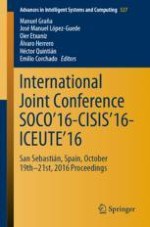This volume of Advances in Intelligent and Soft Computing contains accepted papers presented at SOCO 2016, CISIS 2016 and ICEUTE 2016, all conferences held in the beautiful and historic city of San Sebastián (Spain), in October 2016.
Soft computing represents a collection or set of computational techniques in machine learning, computer science and some engineering disciplines, which investigate, simulate, and analyze very complex issues and phenomena.
After a through peer-review process, the 11th SOCO 2016 International Program Committee selected 45 papers. In this relevant edition a special emphasis was put on the organization of special sessions. Two special session was organized related to relevant topics as: Optimization, Modeling and Control Systems by Soft Computing and Soft Computing Methods in Manufacturing and Management Systems.
The aim of the 9th CISIS 2016 conference is to offer a meeting opportunity for academic and industry-related researchers belonging to the various, vast communities of Computational Intelligence, Information Security, and Data Mining. The need for intelligent, flexible behaviour by large, complex systems, especially in mission-critical domains, is intended to be the catalyst and the aggregation stimulus for the overall event.
After a through peer-review process, the CISIS 2016 International Program Committee selected 20 papers.
In the case of 7th ICEUTE 2016, the International Program Committee selected 14 papers.
